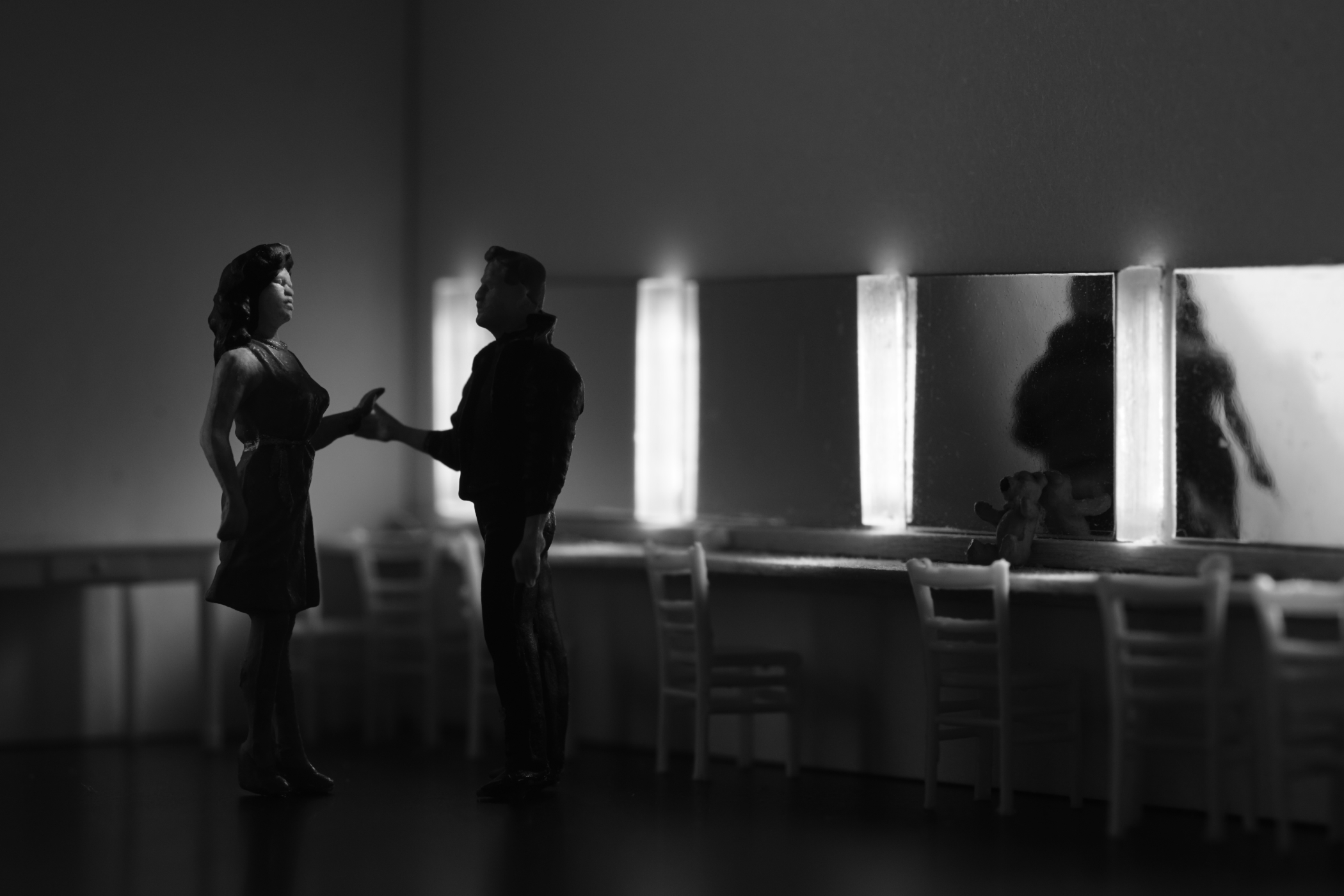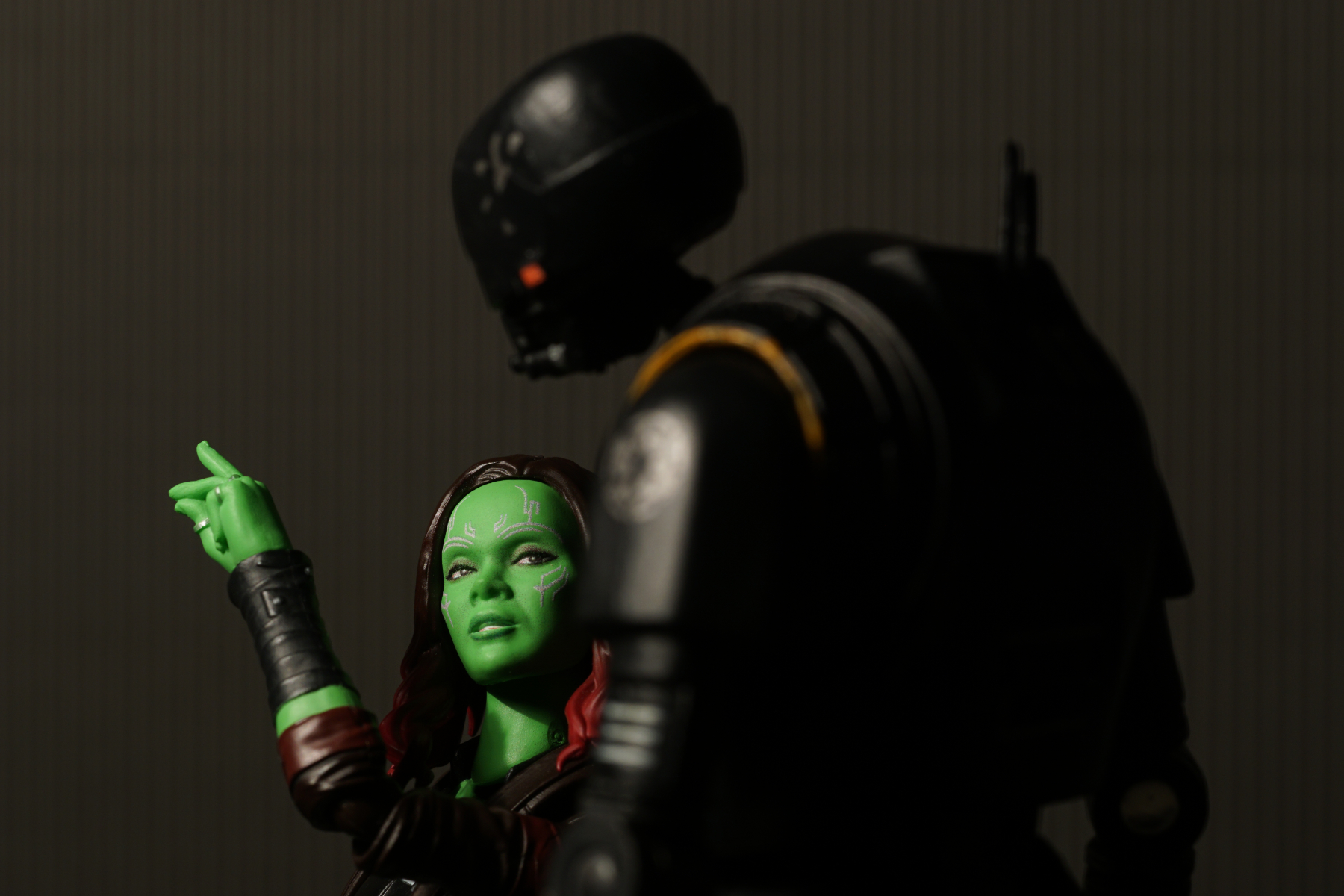Hi, I am Tobias. I studied philosophy and German literature which apparently qualified me to work in the marketing and communications unit of an insurance company today. They hired me to edit an in-house magazine and other media which I have chiefly been doing for more than 20 years.
I’ve been having an on-and-off relationship with photography since I got my first camera – a Rollei 35 S – at age 14. While I often felt that it was impossible to make the pictures I like (which would have had to be surrealistic for a younger me, and then abstract), things picked up when I could afford more sophisticated cameras like the Nikon FE2 and later, digital cameras that opened more creative possibilities. And things got even more intense when I dipped my toe into toy photography. It still appears I like what this genre has to offer, remembering that toy photography does not have to be about toys.
I currently live in Düsseldorf with my wife and plenty of toy figures.

Where do you get your best photography ideas?
Movies and museums – the picture above may have been inspired by Edward Hopper’s work.
Following the news – that’s where this post’s featured picture comes from: It is entitled Lockdown (2020).
Keeping my eyes open while I am out and about – most of my diorama architecture owes a lot to reality.
And playing with the toys, of course – Spidey Hop is mainly the result of this kind of toying around.

Tell us about your process in creating images from original thought to final photo image.
It usually starts with a general idea like “I need some kind of hallucination or simulation.” Once I have that general idea, I try to specify it, for example: “In that simulation, people must feel like they are partying in some kind of box that’s hovering above the desert.” I let it evolve in my mind, probably draw some sketches, occasionally shoot a couple of test photos.
Then I build and/or buy the pieces I need for the setup (if do not already have them). Once I got my stuff together, I set it up. I usually do a ‘rough’ setup and then control it through the camera because on screen things look different from what the naked eye sees. All that done, I set up and adjust the light in order to refine the picture. However, lighting can also be part of setting up from the beginning (especially with pictures like the one above), and sometimes the first idea I have is a lighting idea. All in all lighting always gets some special attention: How does it make my figures look? Do I get the desired effect? Finally the photographing starts.
Once I feel like I got my picture in the box, I allow a little extra time for just playing with the scene. It is always fun to imagine how other photographers – say, Jeff Wall, Jim Rakete or Ansel Adams – would go about it. How would the same scene look if this were a horror movie or a romantic comedy? What would it be in a graphic novel by Joëlle Jones oder David Mack?
After that, I transfer the pictures to my laptop and sort through them, trying to decide what goes to the trash, and which photos are good … and if there are any which great and should be considered for editing, or if it is back to square one, literally giving it another shot.
Then I edit – I use Affinity Photo because I do not like Adobe’s cloud scheme – but keep that to a minimum: I brush off dust, remove the flashes left over from casting and correct sloppy cast and paint jobs which is quite an issue with H0 scale figures. I’ve also begun to remove the most plasticky looking reflections, but that’s a job that easily gets overdone: If nothing indicates you’ve been photographing toys, what’s the point? This is where I’d like to add that my Preiser figures do not look any better than those you can buy, but I did get better with editing over the years (although the possibilities are limited).
After editing, I spend some more time with my pictures: Do I enjoy looking at them times and again? Do I find mistakes I’d missed in the process? I take them on a test drive: How do they look in the context of my blog? How would / do they look on the wall? Matted and framed, toy photos look and feel quite different from everything you can see on a screen. They become real life objects which in my eyes warrant a different kind of attention. The process of framing and exhibiting has made me realize that even many of the pictures I love aren‘t what I want to see on my wall.

What is your current equipment set-up and why is it your favorite?
I use a Sony a6000 with a Novoflex adaptor for Nikon Lenses. My go-to lens for toy photography is Nikon’s Micro Nikkor 55/2.8 AIS (a fairly ancient manual lens), but I also love Sony’s Zeiss 24/1,8 for its wider angle and (also) great close-up focusing distance. I always use a tripod when photographing toys, and I hook up my iPad as a remote control for the camera. The iPad is also a great additional device for evaluating composition.
The one thing I generally ask about equipment is: „Can I turn this off?“ Meaning that I love to work in full manual mode and undisturbed by beeps. I don’t need my camera sharing its engineers’ opinion about what makes a good picture. I guess I mostly like my equipment because I can go all manual.

What kind of reaction are you looking for from your viewers?
Bad as it might feel when somebody doesn’t like the photo I’m currently in love with, I find it much worse when somebody swoons over a photo I find ‚okay‘ at best.
That said, I’m happiest when people engage with a picture, maybe even take the time to decipher its meaning(s), arrive at an interpretation and maybe share their insights with me. I am often surprised by their perceptions and perspectives, and that’s something I immensely enjoy.

What has been your most treasured feedback?
„This is okay, but your other photos are more exciting“ – a very motivating compliment!

What are some common mistakes you see in other people’s images and lighting set-ups?
Visual clutter! One thing I especially see in toy photography is people trying to get too much into one frame. Don’t get me wrong: Clutter can help you tell a great story, especially if you need to convey a sense of urbanity! However, it often just doesn’t. I am always amazed how little ‚stuff‘ I really need in a frame to tell my story.

What are the most important tips that a new hobbyist should know if they are interested in pursuing toy photography?
Take your time! Take your time to develop an idea of the picture. Things can be more complex than they first appear. And it’s the simplest photos which provide the greatest challenges. Take your time for setting up! Make sure your toys appear natural, be careful they are not crooked – H0 figures tend to be. Pay extra attention to hands and feet if they are flexible – a minute gesture of your hero’s hand can alter or even determine the meaning of your picture. Take your time for the actual photograph. A subject that deserves being photographed deserves being photographed from a couple of angles, with different light setups.
Most importantly, take your time picking one (!) photo for publication. Your social media friends are not waiting for you to post the next photo. They wait for the great photo. So before anything else, spend some time with your work. Which one of your photos would you enjoy seeing on your living room wall? Wild guess: It’s not the picture that could have been really cool if only… A near miss is a miss nonetheless.
Don’t publish if you suspect you’re not a 100% there yet! Set up again, photograph again, review again. Apply the insights you got reviewing the picture that was almost cool.
And in that process, don’t forget it’s a hobby! Have fun!

Website: empireoflights.com
MeWe profile: Tobias M. Schiel
Instagram handle: @empire_of_lights







Thank you for your thoughts, Tobias. I am fascinated with your work because you do get so much out of so little. And your caution not to rush is a good one. I know I am impatient and need to get things done quickly. Thanks for reminding me that patience is good.
Very much enjoyed hearing more about your approach, Tobias. I enjoy your unique photos. I find them moody and atmospheric, and they often feel like the subject is emerging from the shadows. The way the subject is framed by the light and shadow subtly emphasizes or echoes the way the image is a snapshot in the course of a longer story. Hearing some of the thoughts behind your work offers ideas for how to experiment with my own. Thank you for sharing!